In this article, you will learn what is Hydraulic Press? Its working, parts, advantages, disadvantages, applications, and types of hydraulic press are explained with diagrams.
Furthermore, you can also download the PDF file of this article at the end.
What is a Hydraulic Press?
Hydraulic presses are machines that generate a compressive force by using a hydraulic cylinder in order to create compression. According to Pascal’s law, which states that pressure applied to a confined fluid is transmitted equally in all directions, hydraulic presses typically operate on this principle.
Joseph Bramah from England created the first hydraulic press. In the 17th century, he completed the project (1795). Bramah also created some toilet-flushing materials that are used in daily life.
The hydraulic press is made up of a cylinder and a piston that produce a force that can be used for pressing, molding, or cutting materials, among other things. This force is produced by applying pressure to a fluid that is kept in a reservoir and is typically oil.
The force used to work on the material is applied using the pressure that is transferred from the piston to the cylinder. When a lot of force is needed, hydraulic presses are frequently used in manufacturing, metalworking, and other industrial applications.
Read Also: Different Types of Press Machines & Their Working
Parts of Hydraulic Press
The hydraulic press is made up of several important components, including:
- Frame or housing
- Cylinder
- Reservoir
- Pump
- Valve
- Piston rod
- Plates
- Pressure gauge
- Hoses
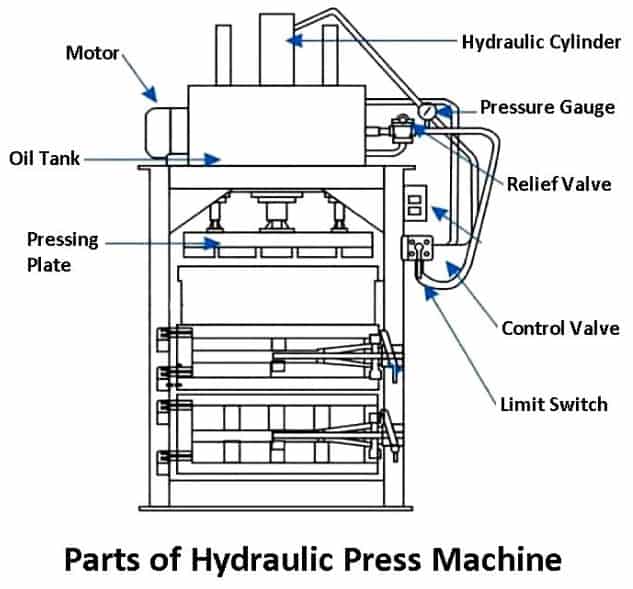
#1 Frame or Housing
The main structure, known as the frame or housing, supports the other parts and serves as the press’s stable foundation.
#2 Cylinder
The main element that produces the hydraulic pressure needed to apply force to the workpiece is the cylinder. In order to create pressure, it has a piston that oscillates up and down inside the cylinder.
#3 Reservoir
Reservoirs are designed to act as storage containers for hydraulic fluids as well as to assist in regulating the flow of the fluids.
#4 Pump
Hydraulic fluid pressure is generated by the pump, which drives the press. The pump can be powered by an electric motor, a gasoline engine, or a hand-operated lever.
#5 Valve
The hydraulic fluid flowing from the pump to the cylinder is managed by the valve, which also helps in regulating the press’s speed and force.
#6 Piston Rod
During hydraulic press operation, the piston rod extends out of the cylinder and transfers hydraulic pressure to the workpiece.
#7 Plates
It is the plates that are responsible for maintaining the workpiece in place and providing a steady platform for the press to operate on when the workpiece is attached to it.
#8 Pressure Gauge
The hydraulic fluid’s pressure is measured with the pressure gauge to make sure the press is operating within its safe operating range.
#9 Hoses
The hydraulic fluid is transported via the hoses from the pump to the cylinder and back to the reservoir. To withstand the pressure and heat produced during operation, they are typically made from high-strength materials.
Read Also: What is Coupling? Different Types of Coupling with Pictures
Working of Hydraulic Press
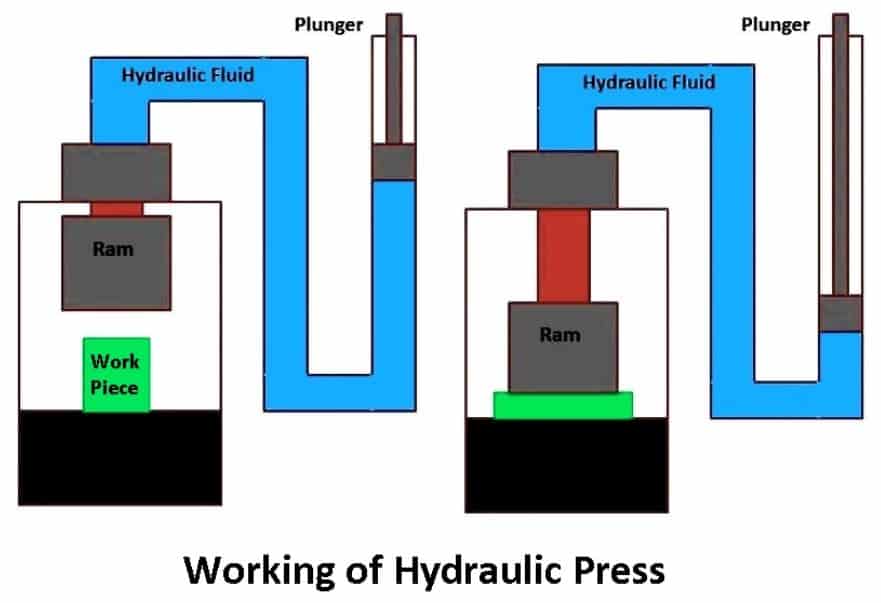
The operating system of the hydraulic press is simple and quite fascinating. It operates according to Pascal’s law, as was already mentioned above. In this machine, two cylinders with various diameters are present.
Usually, there are two cylinders in a hydraulic press: a larger diameter cylinder carries the ram, while the other small cylinder carries the plunger. There is a pipe that connects these two cylinders and is filled with a liquid that is passed through it to transfer the liquid between them.
Pressure is created whenever a small amount of downward force is applied to the plunger. This pressure is applied to the liquid that is in direct contact with the plunger.
The created pressure is evenly distributed in all directions, allowing the ram to perform its function by moving upward. During this time, the ram moves along with the heavier weight placed on it.
Read Also: Different Types of Extrusion Processes and Their Applications
Types of Hydraulic Press
In order to create a compressive force, hydraulic presses use a hydraulic cylinder. There are lots of types of hydraulic presses, some of which are listed below:
- H-frame press
- C-frame press
- Four-column press
- Straight side press
- Eccentric press
- Deep drawing press
- Hot press
- Cold press
- Hydraulic forging press
- Universal hydraulic press
#1 H-frame Press
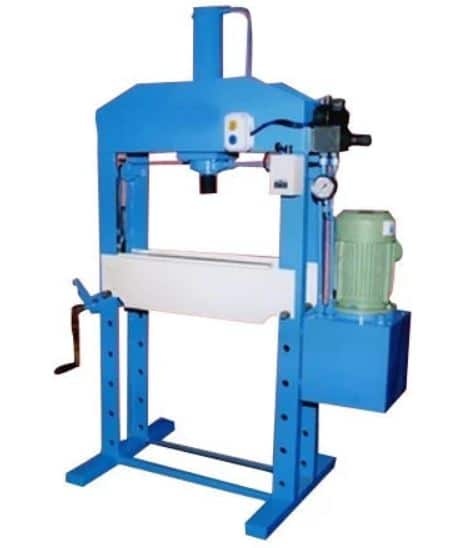
The most popular kind of hydraulic press is the H-frame press, which is distinguished by its H-shaped frame. For low-volume applications, they have a hand pump available. If a reliable operation is needed, they also have electrical and air pumps. H frame presses can be used for a variety of tasks in assembly lines, maintenance facilities, and repair facilities.
#2 C-frame Press
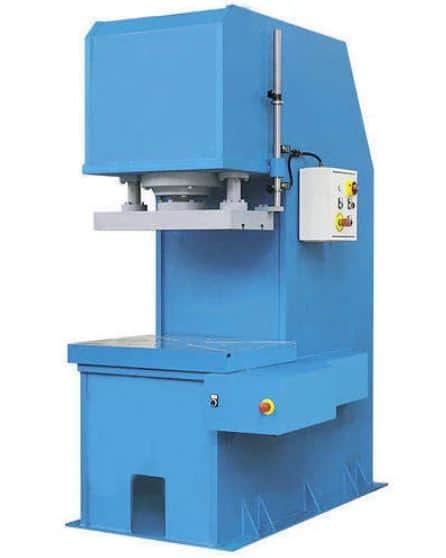
C-frame presses are similar to H-frame presses, except their frame has a C shape instead of an H. Excellent rigidity, guide performance, speed, and exceptional precision are all features of these presses. They require little floor space and are perfect for small businesses.
C-frame presses are employed for a variety of tasks, including straightening, punching, molding, bending, drawing, assembling, riveting, and other all-purpose activities.
#3 Four-Column Press
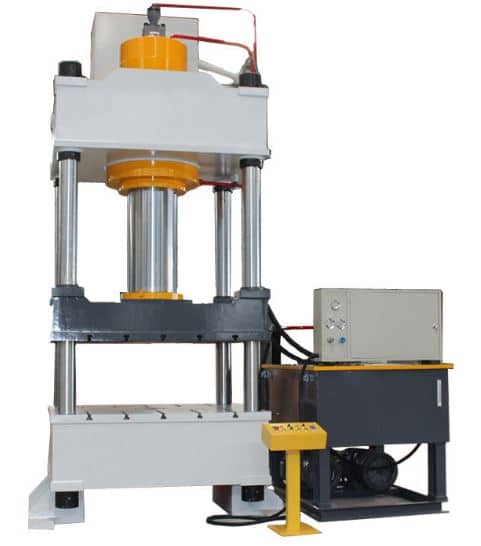
In a four-column press, the main beam of the press is supported by four vertical columns. Four-column hydraulic presses can exert substantial force on a large variety of workpieces.
Depending on the needs of the manufacturing process, they can have a single or two-cylinder design. The central control system of four-column presses features semi-automatic cycling, adjustable pressure, and variable compression speed. These are primarily utilized in heavy industry’s automated pressing, bending, cutting, and hot forging processes.
#4 Straight Side Press
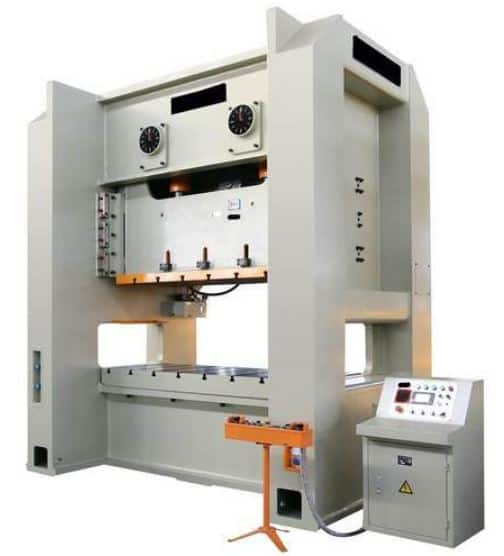
One of the strongest hydraulic presses is the straight-side press, which has two parallel columns and a crosshead. The misalignment problems associated with a C-Frame press are not present with Straight-Side presses. As a result, they are more accurate and ideal for use when precise tolerances are needed.
#5 Eccentric Press
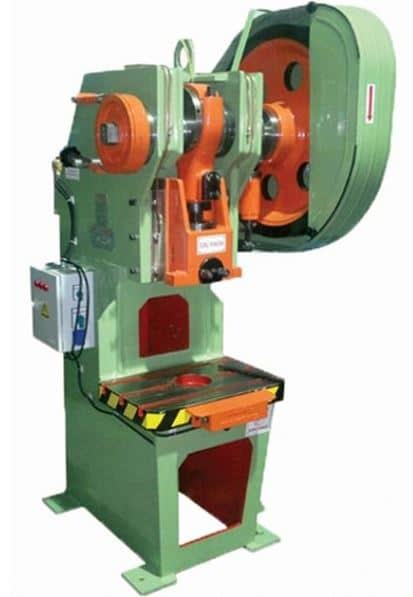
Eccentric presses work by converting circular movements into linear motions through a mechanism called the eccentric mechanism. An eccentric press produces force by rotating a motor, which generates the power to strike metal with a tool. Eccentric presses are commonly utilized for punching, bending, pressing, deburring, and deep drawing.
#6 Deep Drawing Press
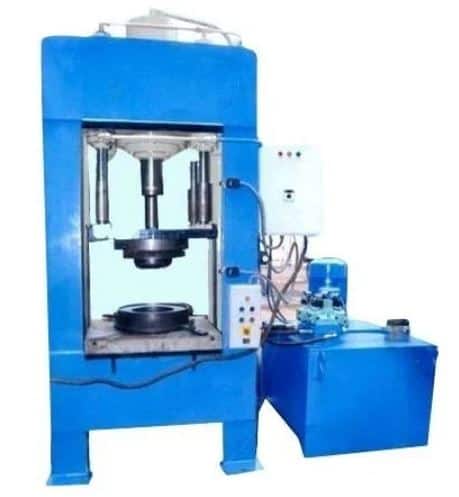
The deep drawing press is created especially for metal forming processes like drawing, punching, and blanking. Deep drawing presses are made up of a main draw ram with a punch or forming tool, a clamp ram in the center, and a knockout cylinder and bed cushion at the bottom.
#7 Hot Press
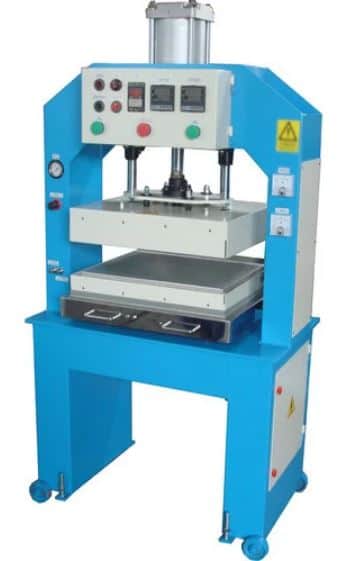
The hot press is used to press materials made of wood or plastic at high temperatures. A hydraulic hot press is a machine used in the production of stainless steel or titanium alloys to make aircraft parts.
#8 Cold Press
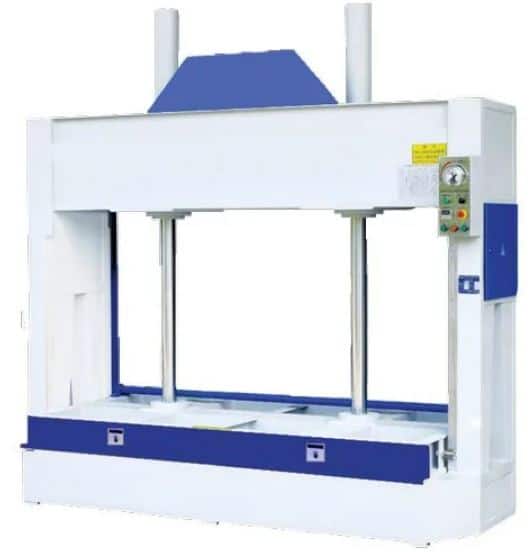
When materials need to be pressed at room temperature, they are subjected to the hydraulic cold press. To create a clear pressing on the wooden sheets, a hydraulic cold press system can be used. The hydraulic cold press system performs flawlessly to produce durable and effective results when making doors, room dividers, and other types of products.
#9 Hydraulic Forging Press
By using a hydraulic forging press, a metal can be shaped by forging it under high pressure in a desired shape. Hydraulic presses employ large pistons propelled by high-pressure hydraulic or hydro-pneumatic systems.
With the help of these presses, a billet or ingot can be bent into the desired shape by applying pressure to the top of a piston and moving the ram downward.
#10 Universal Hydraulic Press
Without any external attachment, universal hydraulic presses are used in nearly all pressing processes, including punching and forging.
Read Also: Different Types of Conveyor Systems & Their Applications
Advantages of Hydraulic Press
It makes sense that hydraulic presses are used in several industries and for a variety of purposes since they have many advantages. Below are a few advantages of hydraulic presses:
#1 High Force Generation
High forces can be produced by hydraulic presses, which makes them perfect for tasks requiring a lot of pressing or stamping power.
#2 Precision
It is possible to achieve consistent, accurate, and precise results by using hydraulic presses.
#3 Versatility
Numerous tasks, including forging, stamping, bending, punching, and other tasks, can be accomplished with hydraulic presses.
#4 Durability
Because they are made to be dependable and durable, hydraulic presses can carry out their intended functions for a considerable amount of time without needing maintenance or replacements.
#5 Energy Efficiency
Since hydraulic oil is used to generate force instead of electricity, hydraulic presses are a more environmentally friendly choice.
#6 Safety
Hydraulic presses are equipped with pressure relief valves and other safety features to guard against machine damage and protect users from overloading.
#7 Cost-effective
Hydraulic presses offer good value for investment and are relatively more affordable than other types of presses.
Read Also: Different Types of Threads [Complete Guide] with Images
Disadvantages of Hydraulic Press
Before making a purchase decision, buyers should consider the disadvantages of hydraulic presses in addition to their advantages. Numerous drawbacks of hydraulic presses include:
#1 Cost
When it comes to high-tonnage models, hydraulic presses can be pricey.
#2 Maintenance
Regular maintenance is necessary to keep hydraulic systems functioning properly and securely. This can be expensive and time-consuming.
#3 Complexity
In comparison to other types of presses, hydraulic presses can be complex, which makes them more challenging to maintain and repair.
#4 Size and Weight
It can be challenging to move and install hydraulic presses since they are heavy and large.
#5 Leakage
The system may experience hydraulic fluid leaks, which can be messy and possibly hazardous.
#6 Environmental Concerns
If hydraulic fluid is not disposed of properly, it can be hazardous to the environment.
#7 Energy Consumption
When compared to other types of presses, hydraulic presses are less energy-efficient because they use a lot of energy.
Read Also: What is Rolling Mills? Parts, Working & Types of Rolling Mills
Application of Hydraulic Press
Many different applications for hydraulic presses exist, such as:
- In order to apply pressure to shape and form metal components, hydraulic presses are frequently used in metal forging and forming.
- Molding and pressing of plastics, composites, and other materials are done with hydraulic presses.
- These presses are utilized for punching and stamping metal sheets into predetermined shapes and sizes.
- To produce curved and angled metal components, hydraulic presses are used in bending and shaping applications.
- The use of hydraulic presses in the extrusion of metals, plastics, and other materials allows for long, continuous shapes to be produced.
- Compression molding is a process that uses hydraulic presses to create molded components out of composite, rubber, and plastic materials.
- In testing and calibration, hydraulic presses are used to exert force on materials and components and measure their response.
- In recycling, hydraulic presses are used to compress waste materials, like scrap metal, into sturdy crates.
Closing It Up
I hope I have covered everything about this article “Hydraulic Press“. If I missed something, or if you have any doubts, let me know in the comments. If you liked this article, please share it with your friends.
Want free PDFs direct to your inbox? Then subscribe to our newsletter.
Download PDF of this article:
You might like to read more in our blog:
- What Different Types of Arc Weldings Process?
- 20 Different Types of Nuts and Bolts [Their Working & Applications]
- What are Jigs and Fixtures? Types, Parts, Advantages, and Applications
- What is the Difference Between Tig and Mig Welding? [Explained]
- 15 Types of Bearings and Their Applications [Pictures & Names]
EXCELLENT
Thank you.
I lke this email becouse i am a mechanical engineer so it very helpful
I’m glad it was helpful for you.